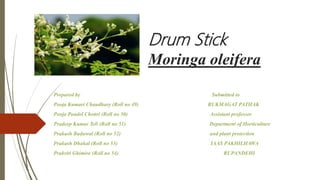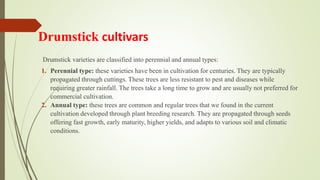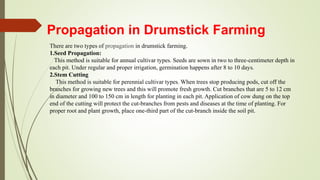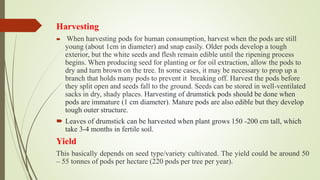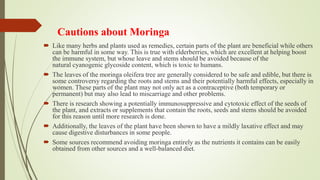This document provides information about drumstick (Moringa oleifera), including its botany, uses, cultivation practices, varieties, pests and diseases, and nutritional benefits. It notes that drumstick is a fast-growing, drought-resistant tree native to South Asia. All parts of the plant are used, including the leaves, pods, flowers, seeds, roots, and bark. The document outlines drumstick's cultivation requirements and production practices, and identifies several pests and diseases that affect the crop. It concludes by discussing drumstick's high nutritional value but also notes some cautions about consuming certain parts of the plant.
